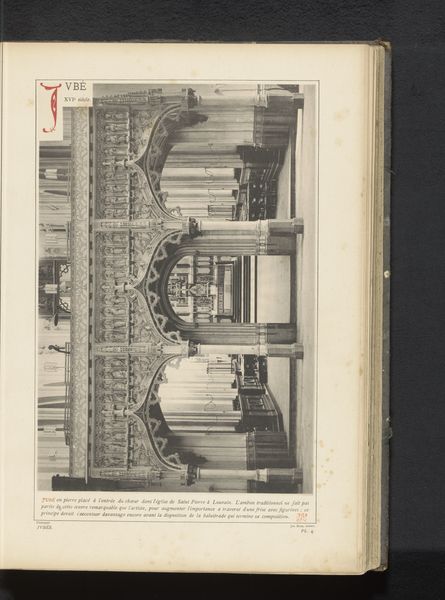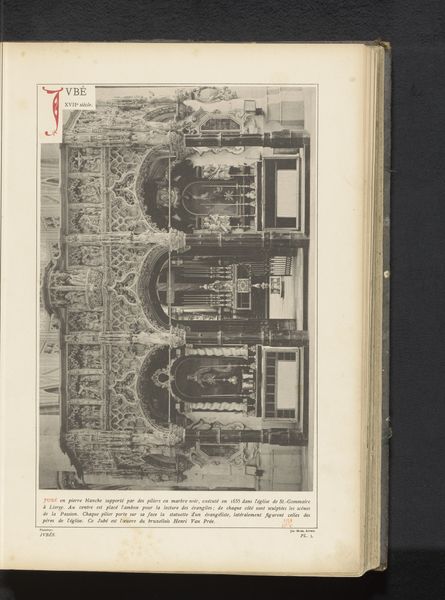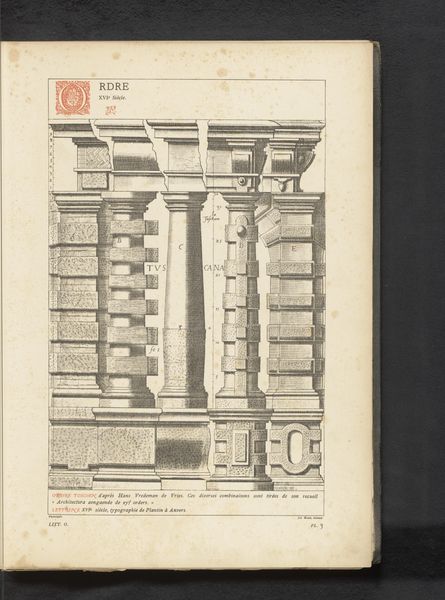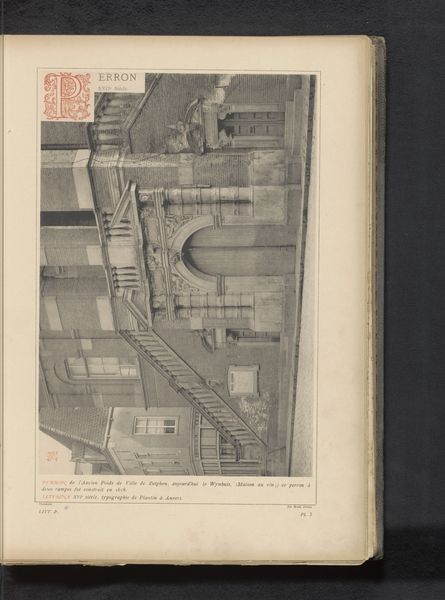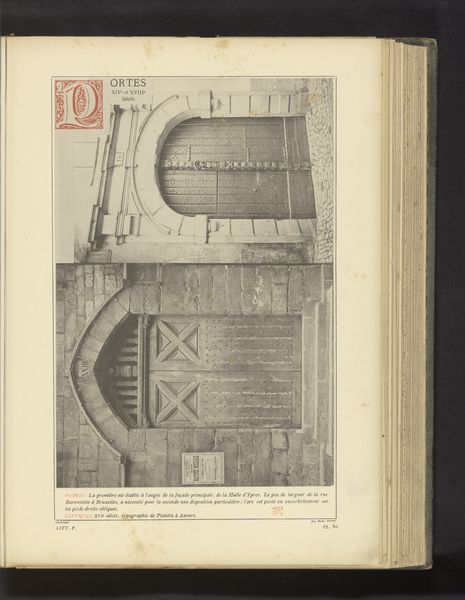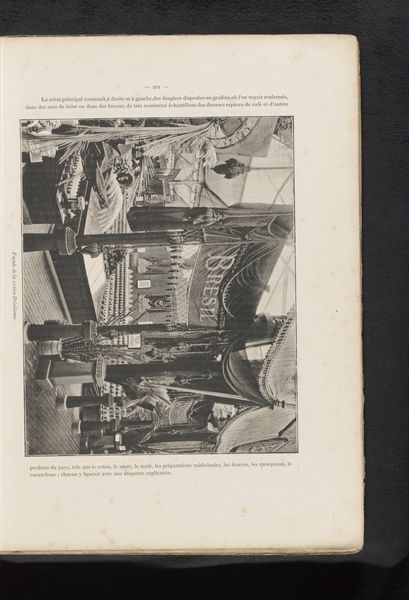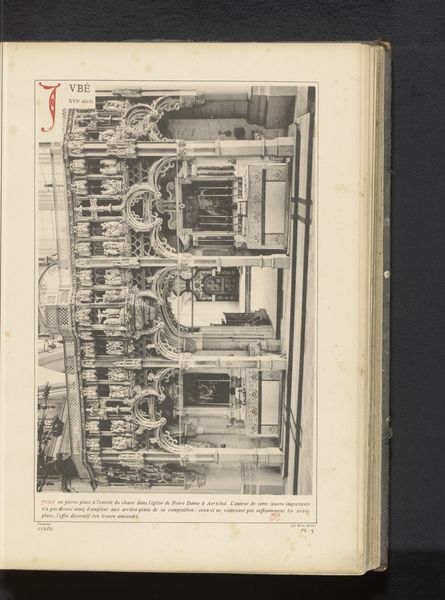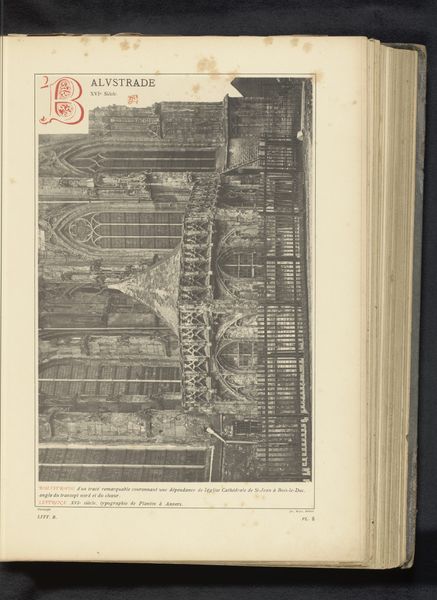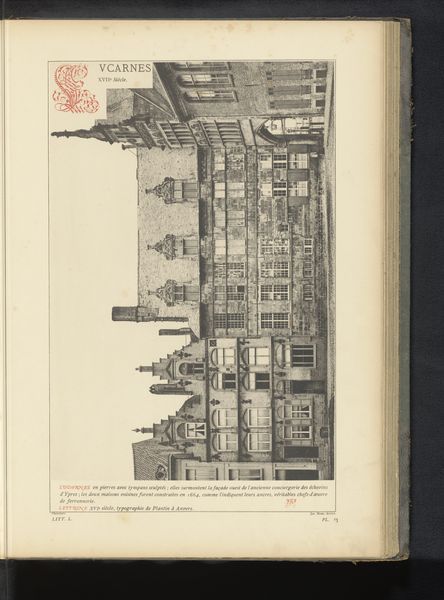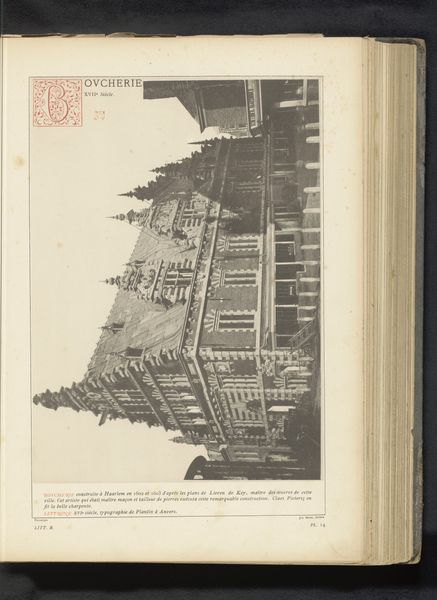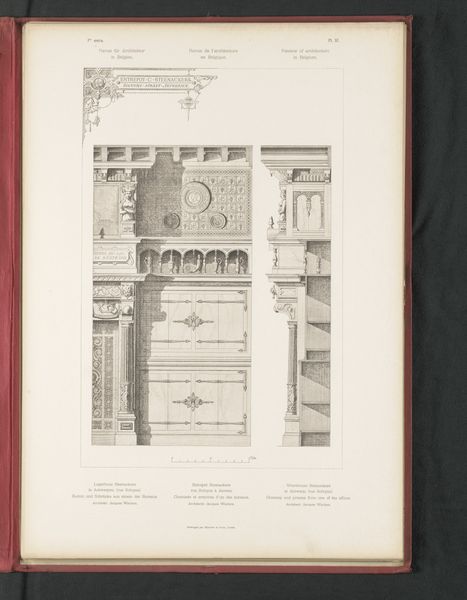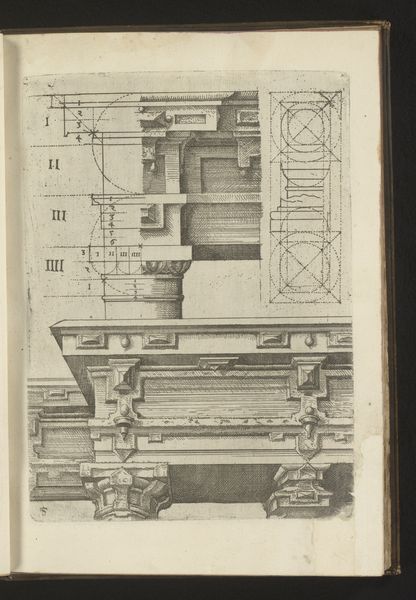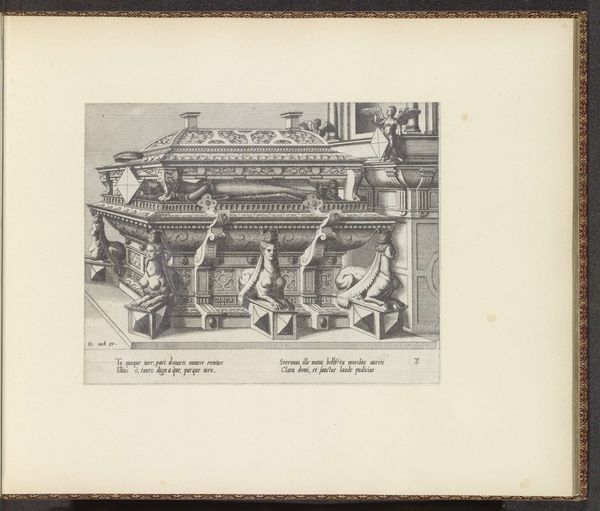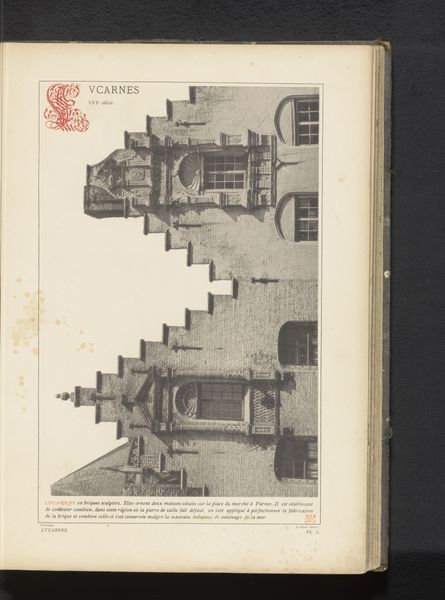
drawing, print, etching, architecture
#
drawing
#
medieval
# print
#
etching
#
landscape
#
cityscape
#
academic-art
#
architecture
#
realism
Dimensions: height 340 mm, width 234 mm
Copyright: Rijks Museum: Open Domain
Editor: Here we have an etching from before 1889, titled "Portal and Stairways of the Gouda City Hall". It seems to be an architectural drawing. I'm really struck by the level of detail here - almost photographic, and the way the artist captures the grand scale of the building using only line work. What do you see in this piece? Curator: This work really speaks to the 19th-century fascination with the medieval period and the rise of civic pride. These city halls, particularly in the Netherlands, became potent symbols of urban identity and power. Academic artists often reproduced such views. How do you think this image might have been used and by whom? Editor: I imagine prints like this were used in architectural studies, maybe? Or perhaps they were souvenirs sold to tourists. I suppose I had not thought about how powerful city hall buildings could be, just considered the architecture to be aesthetically pleasing, a decorative etching. Curator: Precisely. The circulation of such images, made possible by printmaking, helped to shape and disseminate architectural ideals but it also reinforced ideas about what constituted a "proper" city. Who was represented in these images, and conversely, who was excluded? Were there alternative artistic traditions, perhaps those by marginalized communities, which critiqued the dominant representation of cities? Editor: I had never considered whose stories get told through architecture. That adds a whole new layer of meaning to the work for me, thinking about what choices are made in city spaces. Curator: Exactly. By looking at how buildings and their representations reflect and reinforce power structures, we can understand how art actively participates in the shaping of society and impacts its collective memory. Editor: It's interesting to view what seems like a simple depiction as having deeper implications related to politics, identity, and even exclusion.
Comments
No comments
Be the first to comment and join the conversation on the ultimate creative platform.
